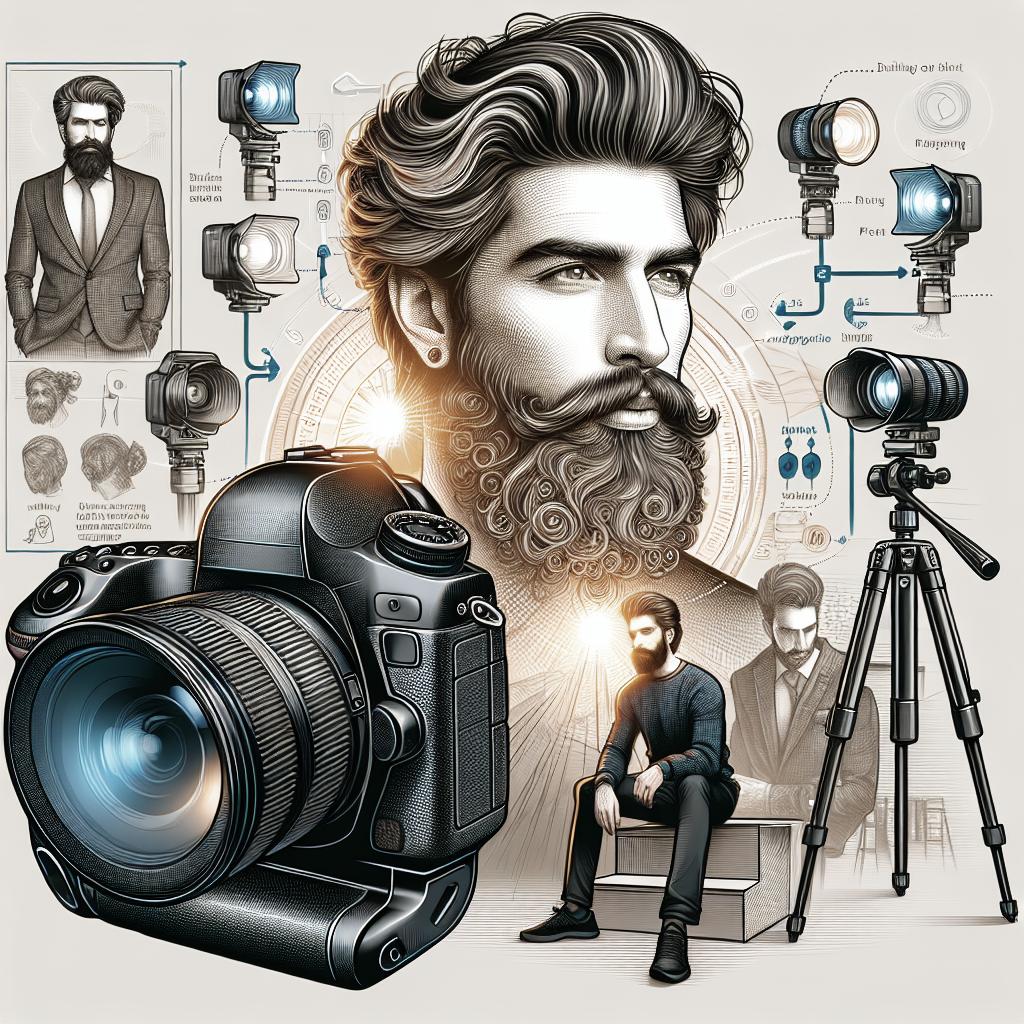<>
“`
Shooting on-location portraits presents unique challenges and rewards. In this post, we explore essential aspects such as selecting the proper background, understanding lighting, managing your equipment, and creating a comfortable atmosphere for your subjects. Whether you’re an amateur photographer or a seasoned professional, these insights will help you capture compelling and memorable portraits. Learn how to adapt to varying conditions and bring out the best in your subjects through thoughtful planning and creative techniques.
Background Selection: The Foundation of A Great Portrait
When shooting portraits on location, choosing the right background is critical, and just like anything in photography, there is no one-size-fits-all. The background should complement the subject without overshadowing them. Urban settings often provide rich textures and dynamic elements that add layers to the portrait. Alternatively, nature backgrounds offer tranquil and timeless appeal. The key is to ensure the background aligns with the subject’s personality and the intended mood of the photograph.
Consider the depth of field as well. A shallow depth of field can beautifully blur the background, ensuring the subject remains the focal point. Experiment with different angles and compositions to find a background that enhances the story you want to tell. Pay attention to details such as unwanted objects or distractions that could detract from the final image.
Mastering Lighting: Harnessing Natural and Artificial Light
Lighting is a critical component of successful on-location portraits. Natural light can be your best ally—shooting during golden hours (early morning or late afternoon) provides soft, warm illumination that flatters most skin tones and creates appealing shadows. However, mid-day sun can be harsh and unflattering, so look for shaded areas or use reflectors to balance the light.
For more control over lighting conditions, consider bringing portable lighting equipment such as off-camera flashes or LED panels. These tools allow you to create the desired effects irrespective of the natural light available. Diffusers and softboxes can also help soften the light, reducing harsh shadows and producing more evenly lit portraits.
Equipment Management: Being Prepared for Any Situation
Effective equipment management is key to successful on-location portraits. Start with the basics: a reliable camera and versatile lenses. Prime lenses are great for portraits due to their sharpness and wide aperture capabilities, but a zoom lens can offer flexibility when you need to adapt quickly to changing scenes.
Don’t forget essential accessories like tripods, extra batteries, and memory cards. Depending on your location, carrying weather-resistant gear or protective covers can save your shoot in unpredictable conditions. Being organized and prepared ensures you can handle any surprises and focus on capturing the best shots.
Creating a Comfortable Atmosphere: Interaction and Comfort
The comfort of your subject can make or break a portrait session. Spend time speaking with them before the shoot to build rapport and understand their expectations. This interaction helps ease any nervousness and makes the subject feel more relaxed.
Direct your subjects with clear and positive instructions, encouraging them to be themselves. Show them some of the shots as you go along to boost their confidence and provide regular feedback. A relaxed and comfortable subject usually results in more natural and engaging portraits.
Post-Processing: Enhancing Your On-Location Portraits
Post-processing is where your on-location portraits can truly come to life. Basic adjustments such as exposure, contrast, and color balance can elevate your photos significantly. Use editing software like Adobe Lightroom or Photoshop to fine-tune these aspects.
Advanced techniques like retouching skin tones, enhancing eyes, or applying creative filters can add a professional touch to your portraits. Remember, the goal of post-processing is to enhance the natural beauty of the shot without overdoing it. A light touch often yields the best results, keeping the essence of the original photo intact.
Future Prospects
Shooting on-location portraits is a rewarding challenge that combines creativity, technical skill, and interpersonal dynamics. The perfect shot is often a blend of thoughtful planning, adaptability, and a good rapport with your subjects. As you refine your technique, keep experimenting with different backgrounds, lighting conditions, and equipment. Staying updated with the latest trends and tools in photography will also help you keep your work fresh and inspiring. Whether capturing urban energy or nature’s tranquility, these guidelines are the stepping stones to continually improving your on-location portrait photography.
| Aspect | Key Points |
|---|---|
| Background Selection | Complementary background, shallow depth of field, avoid distractions |
| Lighting | Utilize natural light, golden hours, artificial lighting for control |
| Equipment Management | Reliable camera, versatile lenses, essential accessories |
| Creating Comfort | Build rapport, clear instructions, provide feedback |
| Post-Processing | Basic adjustments, advanced retouching, enhance naturally |
“`


